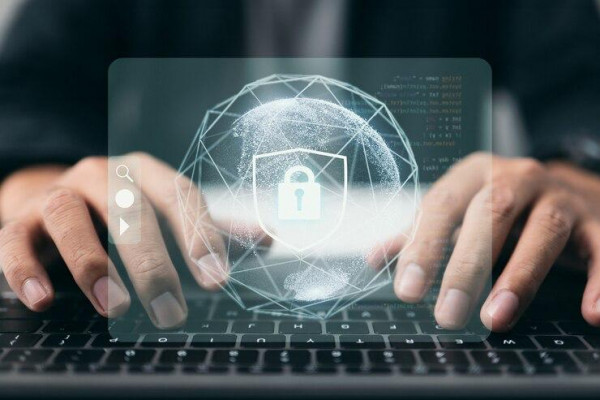Welcome back to our exploration of the most significant cybersecurity attacks in Indian history. If you haven’t already, make sure to read Part 1 [here].
Cybersecurity threats have evolved into a relentless force, testing the resilience of nations and institutions worldwide. In India, a nation on the cusp of a digital revolution, safeguarding against cyber threats is paramount. In this continuation, we unravel five more biggest cyber incidents that have left an indelible mark on India’s cybersecurity landscape. Each incident serves as a testament to the critical need for unwavering vigilance and cutting-edge cybersecurity measures. Let’s delve into these significant events that have shaped the nation’s digital security posture.
Cybersecurity Attack #6: Bengaluru ATM Hack (2016)
In 2016, Bengaluru, the tech hub of India, witnessed a significant cybersecurity incident that sent shockwaves through the nation’s financial sector. Cybercriminals exploited vulnerabilities within the city’s ATM network, employing a combination of malware injection and social engineering tactics. This allowed them to gain unauthorized access to ATMs, enabling them to discreetly siphon off significant amounts of money. This incident served as a stark reminder of the need for enhanced security measures within the financial sector. By prioritizing security protocols and adopting cutting-edge technology, STL Digital fortifies financial institutions against evolving cyber threats.
Cybersecurity Attack #7: Operation Hangover (2014)
In 2014, “Operation Hangover” targeted Indian government officials and military personnel, stealing sensitive data. The attack, attributed to the “Lords of Dharmaraja,” used spear-phishing and stealthy navigation to exfiltrate information. This breach underscored the need for enhanced cybersecurity in government and military sectors, leading to lessons in vigilant training, real-time monitoring, segmented networks, regular audits, collaboration, and incident response planning.
By prioritizing extra vigilant systems, real-time incident response, and intelligence-based threat detection, STL Digital empowers these sectors to navigate the complex cyber threat landscape. Real-time Incident Response.
Cybersecurity Attack #8: Syrian Electronic Army Attack (2014)
In 2014, India faced a cyber threat from the Syrian Electronic Army (SEA), a hacktivist group known for supporting the Syrian government through digital activism. The SEA targeted Indian news websites and social media accounts, defacing them with politically motivated messages. This incident raised concerns about the vulnerability of India’s digital infrastructure to international hacktivist groups, prompting a reevaluation of security measures within media organizations and the broader digital ecosystem.
This incident highlighted the critical need for heightened security measures within media outlets and proactive threat intelligence gathering. STL Digital recognizes the evolving nature of cyber threats and offers tailored solutions for media industry with our cybersecurity and digital rights management (DRM) solutions.
Cybersecurity Attack #9: Kudankulam Nuclear Power Plant Malware (2019)
In 2019, a significant malware attack targeted the Kudankulam Nuclear Power Plant in Tamil Nadu, India. Reports indicated that the breach may have gone undetected for over six months, highlighting the critical need for robust cybersecurity measures in safeguarding vital infrastructure. Although the exact method of attack remains confidential, it is believed that the malware infiltrated the plant’s computer systems, potentially exploiting vulnerabilities in software or networks.
This incident served as a poignant reminder of the potential vulnerabilities even within the most sensitive installations, emphasizing the need for robust cybersecurity measures. STL Digital’s IoT and System Cyber Security offerings, empower a Safe, Intelligent, and Sustainable Future for the Energy, Resources and Utilities enterprises.
Cybersecurity Attack #10: NIC Email Hack (2012)
In 2012, the National Informatics Centre (NIC) faced a significant cybersecurity breach when its email system was hacked, compromising sensitive government communications. The breach, believed to involve advanced phishing techniques or email infrastructure vulnerabilities, highlighted the need for enhanced email security, employee training in cybersecurity, real-time monitoring, incident response planning, and inter-agency collaboration.
This incident highlighted the vulnerabilities within critical government institutions, emphasizing the ever-evolving nature of cyber threats.
Common Themes and Patterns
Analyzing the landscape of cybersecurity attacks in India reveals several recurring patterns. One prominent trend is the escalating frequency and sophistication of ransomware attacks. Cybercriminals increasingly favor this method, encrypting critical data and demanding a ransom for its release. Additionally, targeted attacks on critical infrastructure have emerged as a significant concern. This trend underscores the imperative for fortified security measures in sectors vital to the nation’s functioning, including power, telecommunications, and transportation.
When it comes to vulnerabilities and targets, an examination reveals common points of exploitation. Outdated and unpatched software remains a prime vulnerability. India has made commendable progress in cybersecurity, forming robust policies and protocols through collaborative efforts between the government, the private sector, and experts. Dedicated cybersecurity centers and a skilled workforce are crucial steps in bolstering the nation’s cyber resilience.
Conclusion
These ten major cybersecurity attacks in India underscore the dynamic and relentless nature of cyber threats. Each incident underscores the importance of vigilance, preparedness, and swift response. As we navigate the evolving landscape of cyberspace, it is incumbent upon us to remain steadfast in our commitment to safeguarding our digital future. Continuous investment in cutting-edge technologies, stringent adherence to best practices, and collaborative efforts will undoubtedly pave the way for a more resilient and secure India in the digital age.
STL Digital offers a shield against the ever-present threat of cyber-attacks with our Cybersecurity services. With robust access controls, minimized attack surfaces, and security integrated throughout development, we ensure comprehensive protection. Choose STL Digital for a safeguarded digital journey.



